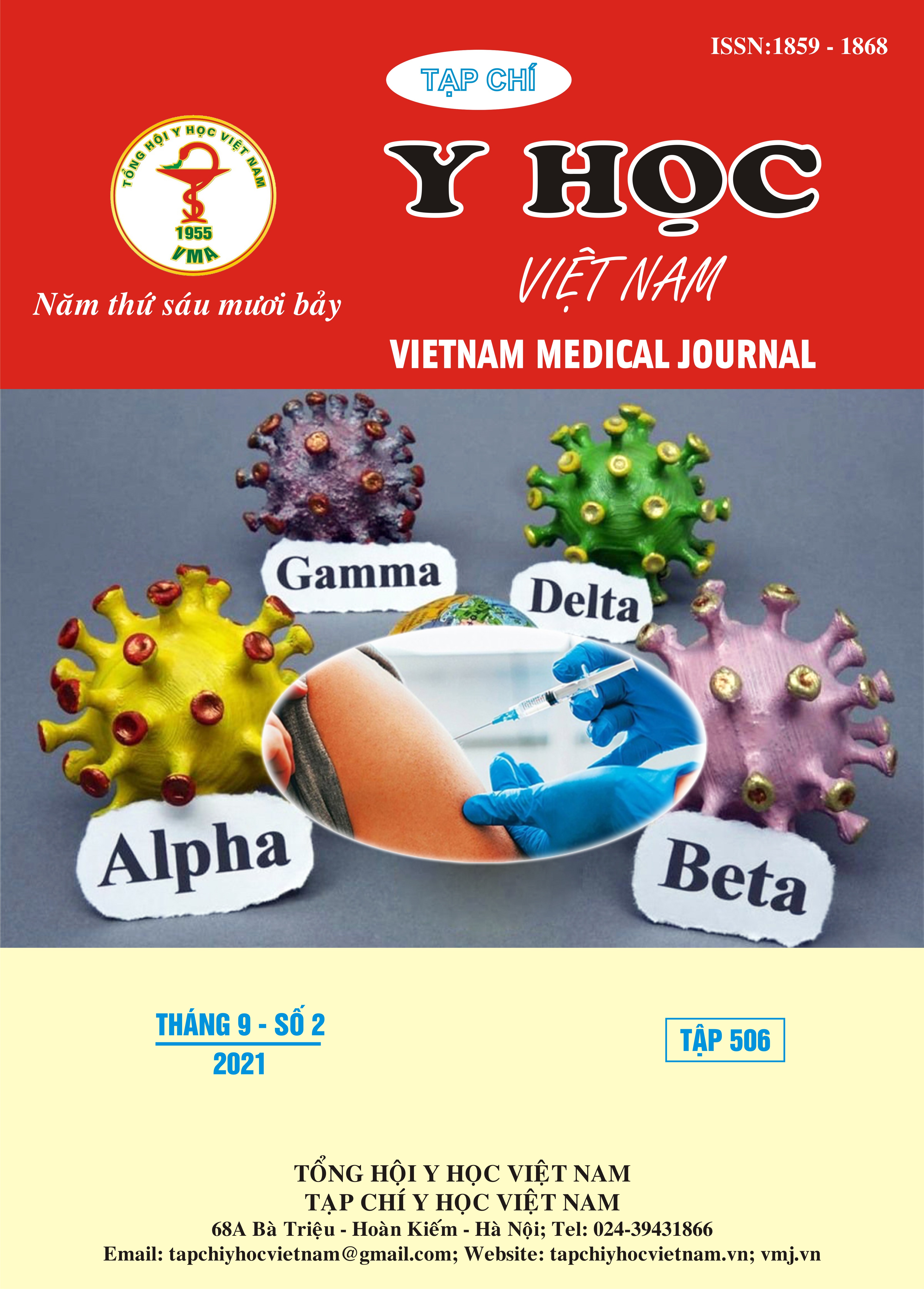HEPATITIS B, C VIRUSES IN KEDNEY TRANSPLANT PATIENTS AT BACH MAI HOSPITAL
Main Article Content
Abstract
Objectives: To describe characteristics of hepatitis B and C viruses, to evaluate kidney function and some related factors in hepatitis B and C patients after kidney transplant at Bach Mai hospital. Subjects and methods: Retrospective and prospective studies, description and analysis on all kidney transplant patients at Bach Mai hospital, comparision between non-hepatitis and hepatitis B and C groups. Results: Out of 223 kidney transplant patients at Bach Mai hospital, there were 24 patients with hepatitis B, 22 patients with hepatitis C, 1 patient with hepatitis B and C co-infection and 176 patients without viral hepatitis. The average number of years of grafting was 3.18± 1.77years. Regarding hepatitis B: prevalence, incidence and reactivation rate was 11.2%, 0.9% and 36%. No outbreak was detected. Regarding hepatitis C: prevalence, incidence and outbreak rate was 10.3%, 1.3% and 4.3%, respectively. Recurrence was not detected. In hepatitis B patients, mean ALT after transplantation up to 1 year; 3 years and from 5 years or more was 26.20± 14.80 UI/L; 32.20± 25.12 UI/L and 41.40± 20.80 UI/L, respectively. In hepatitis C, mean ALT after transplantation up to 1 year; 3 years and from 5 years or more was 27.61± 28.38 UI/L; 30.50± 20.11UI/L and 28.40± 9.66 UI/L, respectively. Mean blood creatinine in hepatitis B and C patients after transplantation up to 1 year; 3 years and from 5 years or more was 103.89± 27.96 umol/l; 98.33± 22.13 umol/l and 100.90± 25.35 umol/l, respectively. The rates of proteinuria and erythrocytosis were similar at 29.8%. Conclusion: The prevalence of Hepatitis B and C in the kidney transplant population is equivalent to the rate of hepatitis B and C infection in the community. Hepatitis B reactivation rate is relatively high at 36%. Concentrations of liver enzymes in hepatitis B patients were higher than those in non-viral hepatitis patients. There was no difference in liver enzyme values between the non-viral hepatitis patients and hepatitis C patients. There was no difference in renal function between non-viral hepatitis and hepatitis B and C patients at 5 years after transplantation. The rate of proteinuria and, erythrocytosis in 2 groups was not different.
Article Details
Keywords
Kidney transplant, hepatitis B virus, hepatitis C virus
References
2. Giáo trình bệnh truyền nhiễm Y5 Y HN.2009.
3. Trần Xuân Trường T.N.S. Kết quả theo dõi và điều trị sau ghép thận có nhiễm vi rút viêm gan C tại bệnh viện Chợ Rẫy ( Kỷ yếu công trình ghép thận bệnh viện Chợ Rẫy 2011-2016).
4. Hồ Mạnh Linh. (2016). Nghiên cứu tình trạng nhiễm virus viêm gan B ở bệnh nhân sau ghép
thận, 5-7, 11-13, 19-28.
5.Trần Xuân Trường T.N.S. Tình hình theo dõi và điều trị HBV sau ghép thận tại bệnh viện Chợ Rẫy (Kỷ yếu công trình ghép thận BV Chợ Rẫy 2011-2016).
6. Emori C.T., Perez R.M., Matos C.A.L. de và cộng sự. (2014). Acute exacerbation of chronic hepatitis B virus infection in renal transplant patients. Brazilian Journal of Infectious Diseases, 18(6), 625–630.
7. Cập nhật điều trị viêm gan C mạn-2019, .
8. Sund S., Reisæter A.V., Fauchald P. và cộng sự. (1999). Living donor kidney transplants: a biopsy study 1 year after transplantation, compared with baseline changes and correlation to kidney function at 1 and 3 years. Nephrology Dialysis Transplantation, 14(10), 2445–2454.


